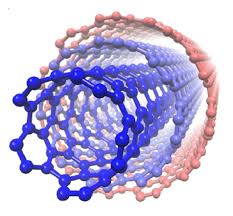Nanosensors with a combination of hydrogen and fluorine (PhD in nano-microelectronics)
Researcher and author: Dr. ( Afshin Rashid)
Note: In the electrical structure of hybridization (metal nanotubes), the reaction with hydrogen gas and fluorine, by entering SP3, converts the electrical structure of hybridization of metal nanotubes into semiconductors.
These reactions sometimes damage the nanotube walls and lead to the formation of amorphous carbon or graphite layer structures. By hydrogenating single-walled nanotubes, the semiconductor nature of SWCNTs increases at room temperature. Strong plasma or high temperature reaction engraves the wall of metal nanotubes. That semiconductor SWCNTs are not damaged. Therefore, controlling the reaction conditions is very important. In nanotubes, reaction with methane plasma removes metal SWCNTs without degrading semiconductor SWCNTs. In the method of using soft nanomolecular hydrogen plasma in which hydrogen plasma is used to convert metal SWCNTs to semiconductor SWCNTs, in which case the nanotube walls are not destroyed or engraved. These reactions, which take place in the gas phase, result in the fabrication of large-scale TFTS and FETS with semiconductor nanotubes, which is critical to the commercialization of high-efficiency nanotube-based equipment . By selecting the appropriate reactant gases, this method can also be used for selective reaction with semiconductor nanotubes. By reacting SWCNTs SO3 as under neutral gas in the presence of gas; Reagent gas inside the furnace at 400 ° C, semiconductor nanotubes preferably react with gas . The nanotubes are then heated to a temperature of 900 ° C to recover metal defects with structural defects. This process is a simple way to enrich the nanotube sample from Nanotubes are metal. Mass production of metal nanotubes can be done by more precise control of reaction conditions and ultimately increase the production scale of its uses, including conductive films and transparent electrodes.
In general, based on the reaction rate, electrochemical covalent selectivity of metal nanotubes can be divided into two categories:
1. First, the nanotube metal to a semiconductor, turn that off of the type of metal used and end the nanotube metal is the first reaction along with the establishment of the electron and the loss of symmetry and a dash of energy at the Fermi level nanotube metal Creates.
2. The second reaction conjugate all systems into a series of smaller aromatic compounds through the open CC bonds in the structure of nanotubes makes. The end result of both modes is the acquisition of semiconductor nanotubes suitable for the manufacture of nanoelectronic equipment .
In selective covalent reactions, the concentration of the reactant is always important. And when the concentration of the reactant is high , both types of nanotubes are affected by the reaction . For example, in the case of FETS, increasing the concentration of the reactant reduces the Off current , resulting in an off / On ratio of more than 105. On the other hand, the strong reaction reduces mobility, which is another important parameter for electronic equipment. Therefore, there must be a balance between the rate of reaction progress and the final efficiency of the equipment.
Conclusion :
There are several drawbacks to covalent methods . First of all, most nanotubes become functional and as a result the electronic structure of SWCNTs is defective. Second, due to the strong reaction, it is difficult to purify the product from amorphous carbon. Most importantly, there is no covalent reaction after which the nanotube (m, n) can be purified uniformly .
Researcher and author: Dr. ( Afshin Rashid)
PhD in Nano-Microelectronics





